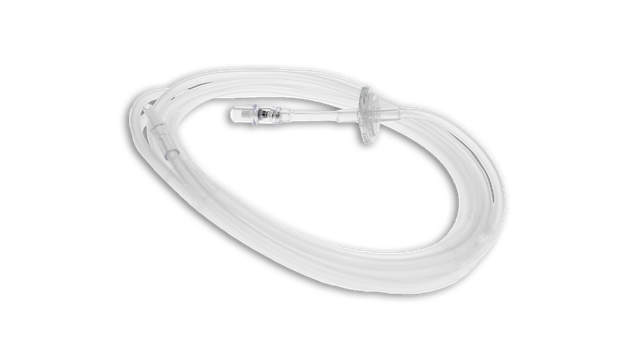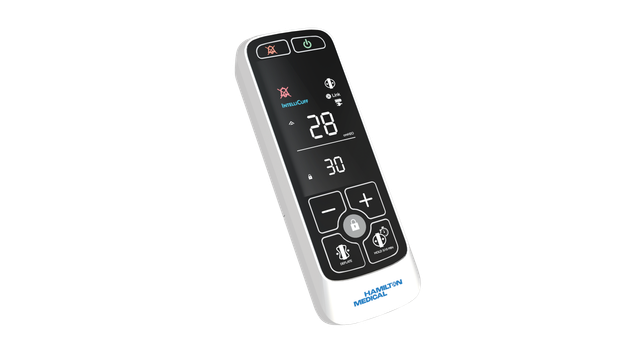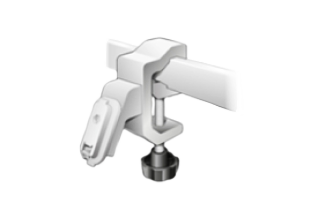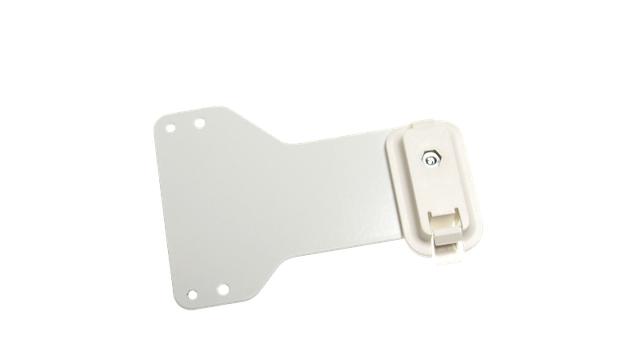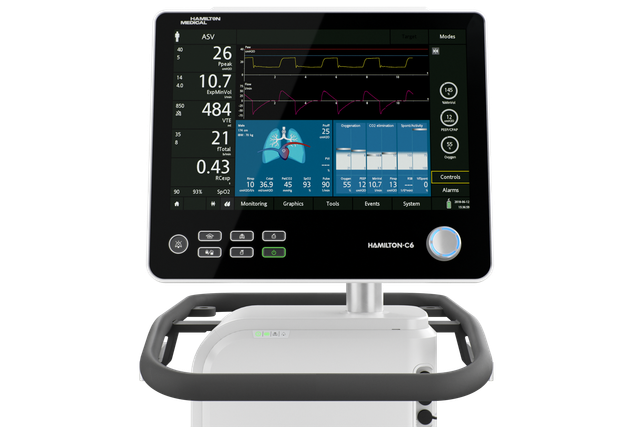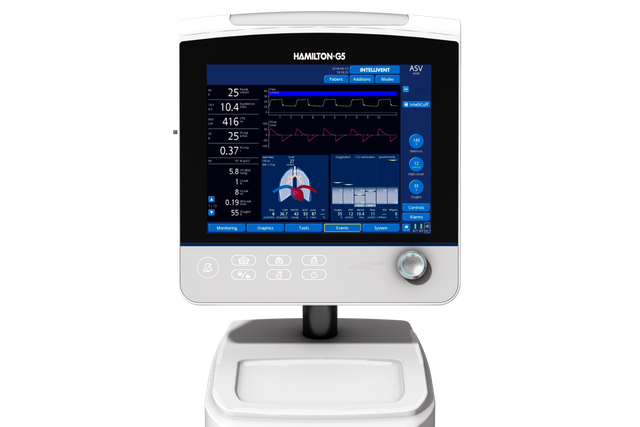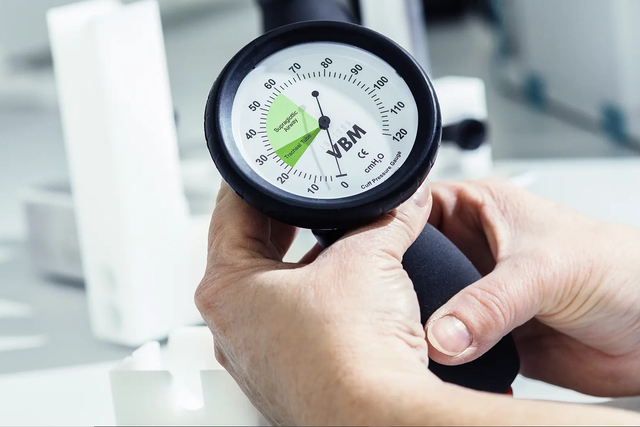
Un engagement constant. Gestion de la pression continue du ballonnet
Les solutions classiques de gestion de pression du ballonnet exigent de surveiller et d'ajuster manuellement la pression du ballonnet.
Vous pourriez nécessiter jusqu'à huit réglages manuels par jour pour maintenir en continu la pression du ballonnet dans les plages souhaitées (
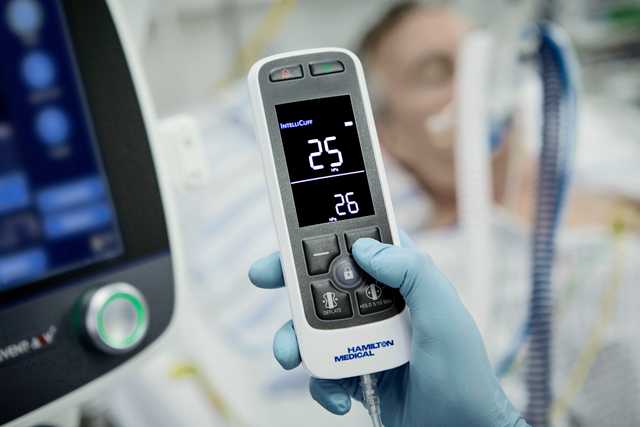
La solution est simple ! Contrôle automatique de pression du ballonnet
Le dispositif IntelliCuff sécurise les voies aériennes de votre patient (
Vous pouvez l'utiliser soit comme un dispositif autonome pour tous les ventilateurs mécaniques, soit en tant que solution intégrée pour le HAMILTON‑C6 et le HAMILTON‑G5/S1.
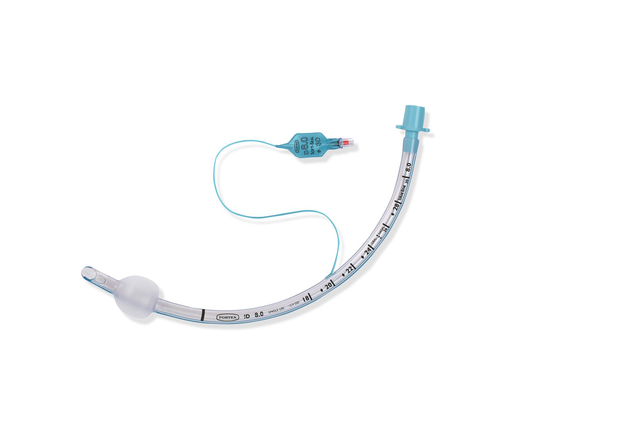
Comment cela fonctionne‑t‑il ? Principes de l'IntelliCuff
Il vous suffit de régler la pression du ballonnet souhaitée, puis l'IntelliCuff prendra le relais pour surveiller et maintenir en continu la pression définie. La pression mesurée dans le ballonnet est affichée sous forme de valeur de monitorage.
En cas de détérioration du ballonnet, l'IntelliCuff déclenche une alarme tout en compensant les fuites pour sécuriser les voies aériennes.

Témoignages de clients
Nous utilisons le dispositif IntelliCuff comme fonction standard de prévention de la BPAVM chez les patients ventilés mécaniquement. Le dispositif IntelliCuff contrôle automatiquement et régulièrement la pression du ballonnet. C'est une aide précieuse pour nous, le personnel soignant, car nous n'avons pas besoin de contrôler manuellement la pression du ballonnet toutes les heures.
Sandra Rupp
Chef du département des soins infirmiers en USI
Hôpital du canton des Grisons, Coire, Suisse
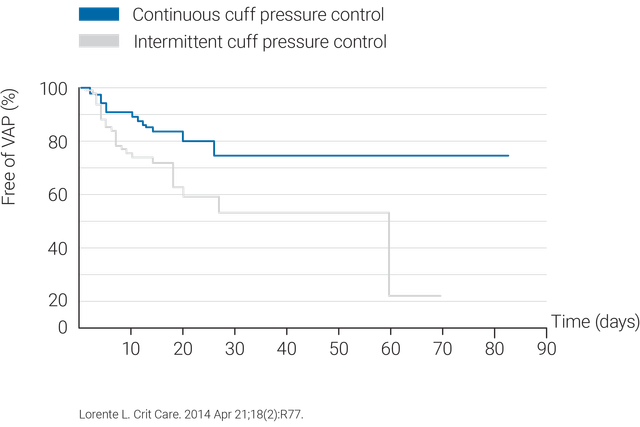
OK, mais est‑ce que c'est sûr ? Focus sur les preuves de réussite
L'utilisation d'un système de contrôle continu de pression du ballonnet tel que l'IntelliCuff est plus efficace pour maintenir une pression du ballonnet dans une plage optimale (
Pour éviter des lésions de la trachée et des ulcères de pression, l'IntelliCuff est doté d'un réglage de pression du ballonnet par défaut défini sur 25 cmH2O (

Bon à savoir ! Supports de formation sur l'IntelliCuff
Accessoires et consommables
Disponibilité
L'IntelliCuff est disponible en tant que système autonome pour tous les ventilateurs ou en tant que solution intégrée en option sur le HAMILTON‑C6 et le HAMILTON‑G5, et de série sur le HAMILTON‑S1.
Pour plus d'informations
Références
- 1. Chenelle CT, Oto J, Sulemanji D, Fisher DF, Kacmarek RM. Evaluation of an automated endotracheal tube cuff controller during simulated mechanical ventilation. Respir Care. 2015;60(2):183‑190. doi:10.4187/respcare.03387
- 2. Lorente L, Lecuona M, Jiménez A, et al. Continuous endotracheal tube cuff pressure control system protects against ventilator‑associated pneumonia. Crit Care. 2014;18(2):R77. Published 2014 Apr 21. doi:10.1186/cc13837
- 3. Nseir S, Zerimech F, Fournier C, et al. Continuous control of tracheal cuff pressure and microaspiration of gastric contents in critically ill patients. Am J Respir Crit Care Med. 2011;184(9):1041‑1047. doi:10.1164/rccm.201104‑0630OC
- 4. Wang R, Sun B, Li X, et al. Mechanical Ventilation Strategy Guided by Transpulmonary Pressure in Severe Acute Respiratory Distress Syndrome Treated With Venovenous Extracorporeal Membrane Oxygenation. Crit Care Med. 2020;48(9):1280‑1288. doi:10.1097/CCM.0000000000004445


